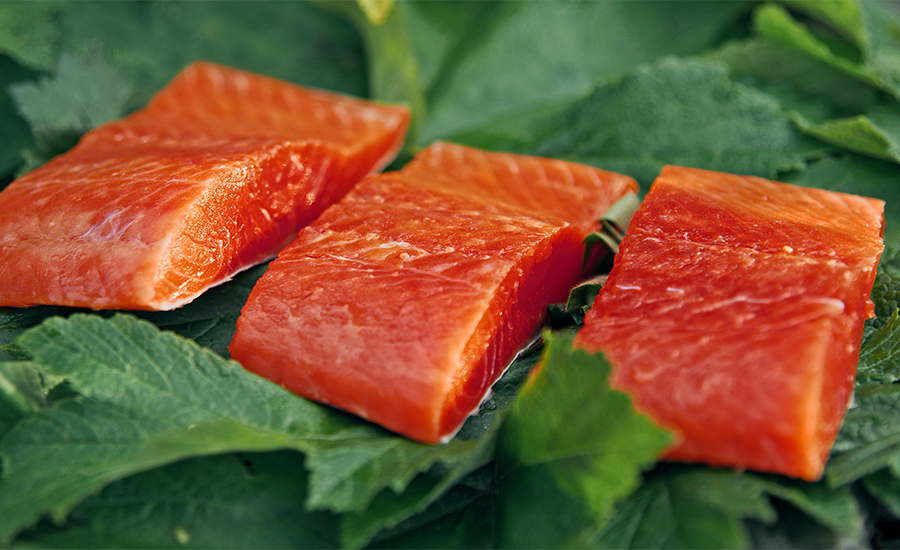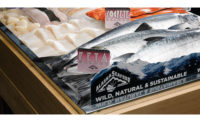Global seafood department sales totaled $16.2 billion in 2022. While this was a slight 3.8% decrease over 2021, seafood sales were still higher in 2022 and into 2023 than 2019, indicating the widespread increase in seafood consumption that began in 2020 is here to stay, and the market is beginning to rebound as inflationary pressures ease. Shoppers who became more comfortable preparing seafood during the pandemic continue to appreciate the versatility, health benefits, and environmental friendliness of the category, with many seafood species having earned a consistent place at the table.
While inflation played a part in the dip in overall seafood consumption in the past year, supply chain challenges can vary widely among species, with some weathering the storms of inflation quite well. For example, Alaska’s sockeye salmon continue to see strong harvests year after year, bringing the cost down for shoppers. In early 2023, the average price per pound of wild sockeye salmon on sale at grocery stores was down 7% since early 2022, compared to an increase of 12% for farmed Atlantic salmon fillets, according to Research and Market Seafood: Global Strategic Business Report January 2023.
Processors, retailers, and foodservice operators can capitalize on the widespread availability of premium species like wild sockeye, where shoppers won’t have to compromise quality for cost savings. Plus, retailers, foodservice partners, and consumers alike can all trust that wild seafood from Alaska is harvested sustainably through responsible fisheries management and science that monitors the environmental impact.

What else should processors, retailers, and foodservice operators focus on for the year ahead?
- Sustainability: Seafood consumers are balancing cost while also aiming to eat a more environmentally friendly diet, with sustainable seafood seeing a 475% 10-year growth, and wild seafood preferred 5:1 over farmed, according to data based on average prices in the Urner Barry Retail Features database for January-February 2023 versus January-February 2022. For processors, retails, and foodservice operators, this means continuing to highlight the source, such as calling out the Alaska origin, as well as sustainability certifications, such as Responsible Fisheries Management. Ensuring that sustainability is communicated to the end buyer via the seafood counter staff, labeling or menuing can also help to increase sales. Ninety-four percent of consumers at foodservice, for example, are more likely to order seafood when they see the Alaska Seafood logo, as they associate it with fresh, great-tasting, healthy, and wild seafood, according to data based on average prices in the Urner Barry Retail Features database for January-February 2023 versus January-February 2022.
- Nutrition benefits: Continued interest in seafood-forward eating styles like pescatarian and Mediterranean diets contributes to the positive outlook for the market in the years ahead, which estimates a compound annual growth rate of 3.6% from 2022 through 2030, according to Datassential, 2022. Seafood is full of high-quality protein, vitamins, minerals and naturally occurring omega-3 fatty acids EPA and DHA and is a key component of heart- and brain-healthy diets, all factors that continue to drive consumers to the category.
- Food and flavor trends. Although home cooks are more comfortable preparing seafood now than ever, they are still looking for ways to keep things exciting, and easy, in the kitchen. Recipe inspiration that leans into trending flavors for the year ahead, for example, sweet-spicy fusions, can help inspire shoppers to branch out to new species, like wild Alaska halibut, sablefish, sole or rockfish, in addition to tried-and-true options like salmon, cod and Wild Alaska Pollock. Tinned seafood continues its time in the spotlight, with elevated versions of everything from sardines to canned Alaska salmon likely to continue serving as a star of social-media-savvy charcuterie boards into 2024.
This was, as expected, a precarious year for various proteins, as consumers adjusted their purchasing habits to weather inflation. However, the five-year trend of seafood sales at retail and foodservice continues to show an upward trajectory. The year ahead should see the category rebound as inflationary pressures ease, bringing smoother seas to the industry as a whole.
Megan Rider is domestic marketing director for the Alaska Seafood Marketing Institute.



Report Abusive Comment